Introduction
Choisir le bon outil de coupe est essentiel pour vos travaux d'usinage et de production CNC. Cela vous permet d'obtenir de meilleurs résultats, de réaliser des économies et de réduire les temps d'arrêt. Outils de coupe en carbure de tungstène sont solides et peuvent bien fonctionner sur de nombreux matériaux, mais vous devez choisir celui qui convient à votre travail spécifique.
Ce guide simple vous aidera à comprendre comment choisir l’outil de coupe en carbure de tungstène adapté à votre application.
Que sont les outils de coupe en carbure de tungstène ?
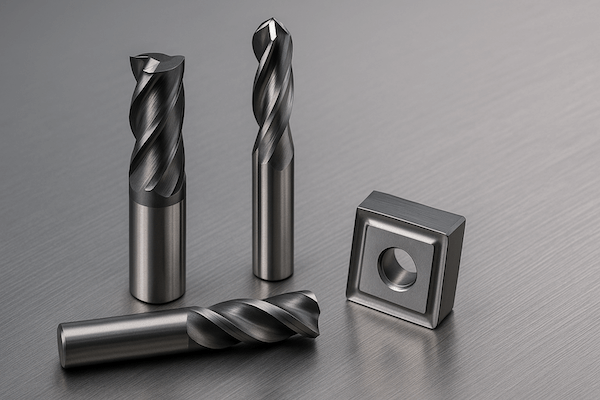
Les outils de coupe en carbure de tungstène sont fabriqués à partir d'un matériau appelé carbure de tungstène. Ce matériau est très dur et résistant, ce qui permet à l'outil de rester affûté longtemps et de travailler à grande vitesse.
Ces outils sont utilisés dans de nombreux secteurs, notamment automobile, aérospatial, travail des métaux, et industries médicales, pour couper, percer, fraiser et façonner différents matériaux.
Pourquoi choisir le bon outil est important
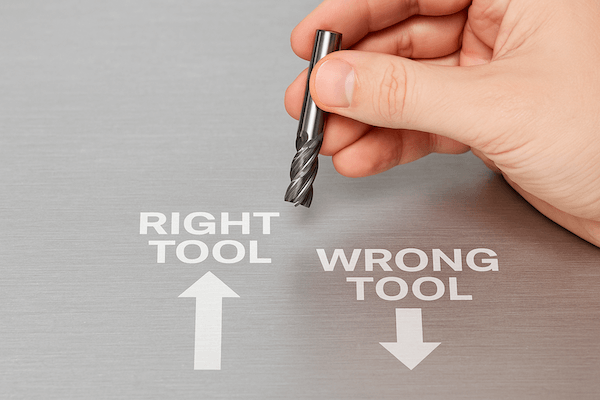
Utiliser un outil inadapté peut entraîner une mauvaise finition de surface, une casse ou une usure plus rapide, ce qui augmente vos coûts de production et ralentit votre travail. Un outil adapté vous aidera à :
✅ Améliorer l'efficacité de l'usinage
✅ Obtenez de meilleures finitions de surface
✅ Réduire l'usure des outils
✅ Travaillez facilement sur des matériaux durs
✅ Réduisez vos coûts globaux
Étape 1 : Connaissez votre matériel
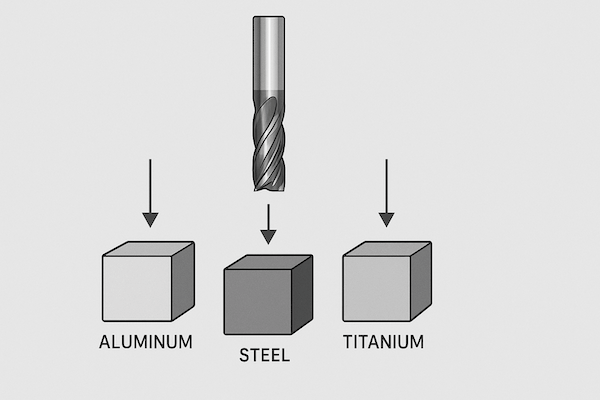
La première étape pour choisir le bon outil de coupe consiste à connaître le matériau à usiner. Chaque matériau nécessite des géométries et des revêtements d'outil différents.
Matériaux souples comme l'aluminium, ils nécessitent des outils avec des bords tranchants plus tranchants.
Matériaux durs comme l'acier inoxydable et le titane, des outils plus résistants avec des revêtements spéciaux sont nécessaires.
Les outils en carbure de tungstène sont excellents pour l'usinage de matériaux durs en raison de leur dureté élevée et de leur résistance à la chaleur.
Étape 2 : Choisissez le bon type d’outil
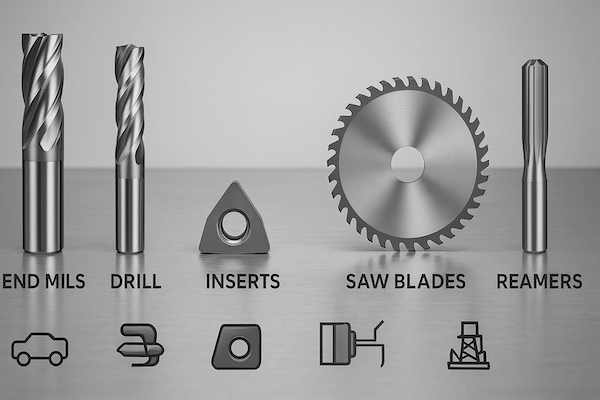
Il existe différents types d'outils de coupe en carbure de tungstène, notamment :
🔹 Plaquettes en carbure: Pour le tournage, le fraisage et l'alésage. Facile à remplacer et économique.
🔹 Fraises en carbure: Pour les opérations de fraisage, de contournage et de rainurage.
🔹 Forets en carbure: Pour des opérations de perçage précises.
🔹 Alésoirs en carbure: Pour la finition des trous avec une grande précision.
🔹 Lames de scie en carbure: Pour la découpe de métaux et de matériaux composites.
Vous pouvez explorer nos produits tels que les plaquettes en carbure et les fraises en carbure pour trouver l'outil qui correspond à vos besoins.
Étape 3 : Vérifiez la qualité de l'outil

Les outils de coupe en carbure de tungstène sont disponibles en différentes notes basé sur dureté et dureté.
Des niveaux plus difficiles sont adaptés à l'usinage à grande vitesse et offrent une meilleure résistance à l'usure, mais peuvent s'écailler sous de lourdes charges.
Des notes plus difficiles sont plus adaptés aux opérations de coupe lourdes, mais peuvent s'user plus rapidement à grande vitesse.
Choisir la bonne nuance vous aide à équilibrer la durée de vie de l’outil et les performances de coupe.
Étape 4 : Pensez aux revêtements

De nombreux outils de coupe en carbure de tungstène sont dotés de revêtements améliorant leurs performances. Parmi les revêtements courants, on trouve :
✅ TiN (nitrure de titane) : Augmente la dureté et réduit la friction.
✅ TiAlN (nitrure de titane et d'aluminium) : Idéal pour l'usinage à haute température.
✅ DLC (carbone de type diamant) : Offre une excellente résistance à l'usure pour les matériaux non ferreux.
L’utilisation d’outils revêtus peut aider à prolonger la durée de vie de l’outil, à réduire la génération de chaleur et à améliorer les performances de coupe.
Étape 5 : Comprendre les vitesses de coupe et les avances
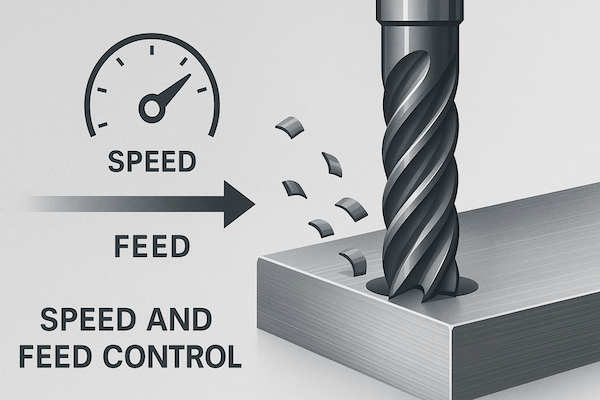
Pour obtenir les meilleurs résultats, il est essentiel d'utiliser une vitesse de coupe et une avance adaptées. Les outils en carbure de tungstène peuvent fonctionner à des vitesses plus élevées que les outils en acier rapide (HSS).
✅ Les vitesses élevées réduisent le temps d'usinage.
✅ Des avances correctes empêchent l'écaillage et la casse des outils.
Consultez les recommandations du fournisseur d’outils pour connaître les meilleures vitesses et avances pour votre matériau et votre type d’outil.
Étape 6 : Adaptez la géométrie de l’outil à votre application
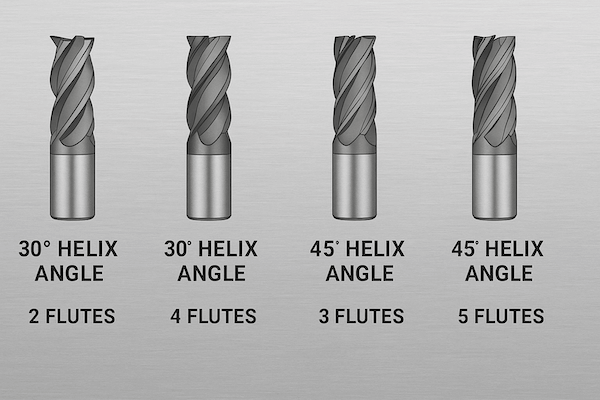
La géométrie de l'outil comprend des facteurs tels que :
Angle d'hélice : Un angle d'hélice plus élevé est préférable pour les matériaux plus mous.
Nombre de flûtes : Un nombre réduit de goujures est préférable pour les matériaux tendres afin de permettre une meilleure élimination des copeaux, tandis qu'un nombre plus élevé de goujures offre un meilleur support pour les matériaux durs.
Angle de pointe (pour les perceuses) : Différents angles conviennent à différents matériaux.
L'adaptation de la géométrie de l'outil à votre application contribuera à améliorer la qualité de la surface et à prolonger la durée de vie de l'outil.
Étape 7 : Évaluer le coût par rapport à la valeur
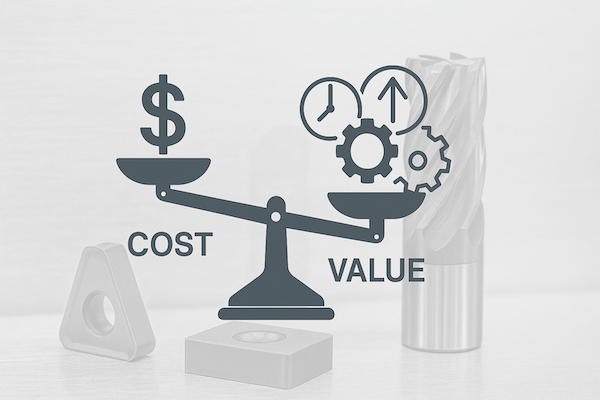
Bien que les outils en carbure de tungstène puissent coûter plus cher au départ, ils offrent :
✅ Durée de vie de l'outil plus longue
✅ Vitesses d'usinage plus élevées
✅ Meilleures finitions de surface
✅ Coûts de production globaux inférieurs
Ils constituent un investissement intelligent pour tout atelier souhaitant améliorer sa productivité et réduire les temps d’arrêt.
Conseils d'utilisation des outils de coupe en carbure de tungstène

✅ Utilisez un liquide de refroidissement et une lubrification appropriés pour réduire la chaleur.
✅ Assurez-vous que votre machine est stable pour éviter les vibrations.
✅ Inspectez régulièrement les outils pour détecter toute trace d’usure ou de dommage.
✅ Rangez correctement les outils pour éviter qu'ils ne s'écaillent.
Pourquoi choisir Retop pour les outils de coupe en carbure de tungstène ?
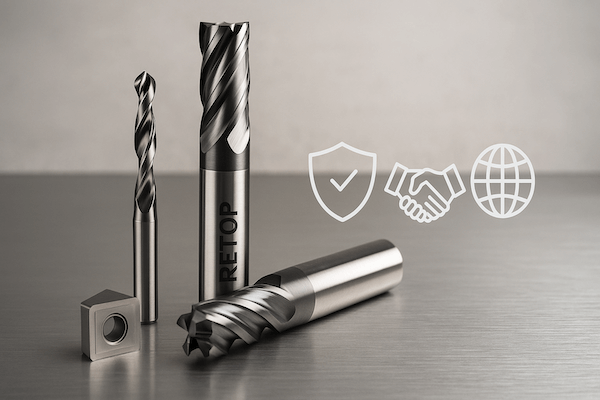
À RefaireNous nous concentrons sur la fourniture d'outils de coupe en carbure de tungstène de haute qualité pour vos besoins d'usinage CNC. Nous proposons :
✅ Plus de 14 ans d'expérience en fabrication
✅ Gestion de la qualité certifiée ISO
✅ Des solutions personnalisées pour vos applications uniques
✅ Réponse rapide et service fiable
Nos outils aident les clients de divers secteurs à améliorer leur efficacité d’usinage, à réduire leurs coûts et à obtenir d’excellents résultats.
Conclusion
Choisir l'outil de coupe en carbure de tungstène adapté à votre application vous aidera à :
✅ Améliorer l'efficacité de l'usinage
✅ Obtenez une meilleure finition de surface
✅ Prolonger la durée de vie de l'outil
✅ Réduire les coûts
✅ Manipulez facilement des matériaux durs
N'oubliez pas de prendre en compte votre matériau, le type d'outil, la nuance, le revêtement, les paramètres de coupe et la géométrie de l'outil lors de votre choix.
